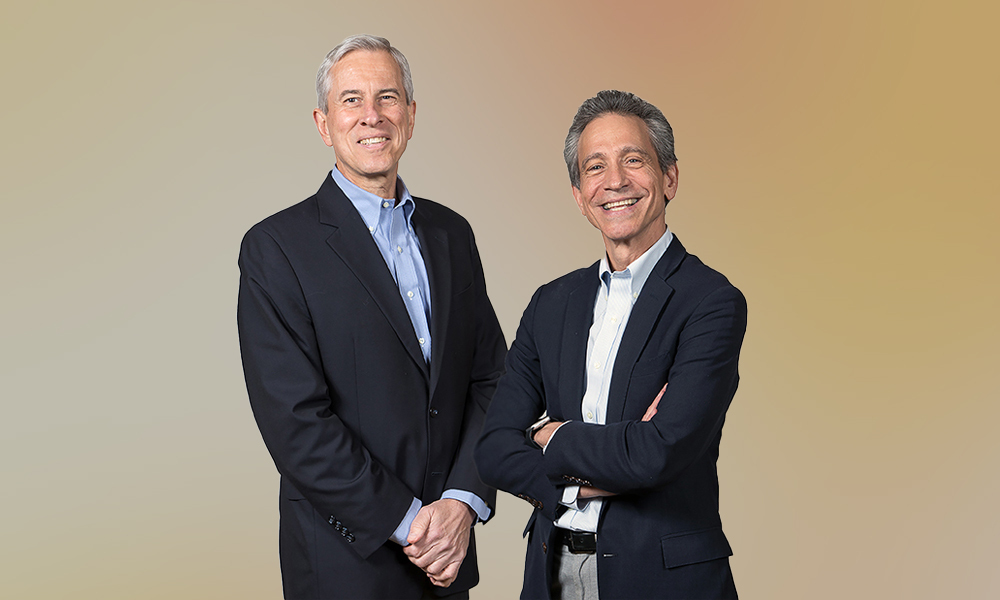The Riverside Company is one of the most prolific private equity firms in the lower mid-market. Béla Szigethy founded the firm from his apartment on New York’s Riverside Drive in 1988. Today, the firm is headquartered in New York and Cleveland and has $13 billion in assets under management. Szigethy serves as co-CEO alongside Stewart Kohl, who joined the firm in 1993 and has the same title. In 2024, Riverside completed 16 exits and announced one more. The firm expects to deliver about $1.7 billion in total distributions back to investors for the year.
PE Hub asked Szigethy and Kohl to share their outlook on dealmaking in 2025, as part of our ongoing series of Q&As with PE thought leaders.
As we begin a new year, let’s start with a brief recap of the key market trends you’ve seen in overall private equity over the past few years.
The market, which fell off the cliff along with many others in early 2022, is now slowly repairing. There was a lot of money raised in 2021, and those investments are just now starting to bear fruit. Additionally, the Fed’s decision to suddenly increase interest rates when inflation proved not to be transitory in early 2022 was like a cold shower dramatically slowing M&A activity and providing investors an attractive no-risk 5 percent return (up from 0 percent) in Treasuries. Plummeting public equity markets in 2022 yielded the dreaded denominator effect as private equity valuations adjust more slowly. Investors found themselves overallocated to PE and CIOs hit the brakes on new commitments.
The rising public equity markets in 2023 and 2024 slowly cured the denominator effect, but a numerator effect followed as private equity generated many fewer exits, and therefore, distributions. Allocations remained extended, and some investors even feared liquidity issues. Others lacked the capacity to underwrite new commitments with all of the other activity and a somewhat shell-shocked mentality. The recession still loomed “next year” for a several-year period, and even the geopolitical and political volatility gave reasons for investors to keep their heads down.
The above phenomenon proved most extreme in venture capital, significant in growth equity but also impacted PE.
What changes did you see in 2024?
With the M&A market healing, distributions rising and PE valuations adjusted, the numerator effect is finally abating and investors are climbing out of their foxholes, peering around and testing the market. They have adequate liquidity, are less fearful of the “Godot Recession” and perhaps sense greater certainty.
We are seeing a greater willingness of investors to consider fresh investments and new managers, and we expect to see that increase over the next several years.
Savvy allocators to PE know that just like with public equities, where one must be careful not to miss the big up days that drive returns, they have to have exposure to what could prove to be an exceptional vintage in private investments.
We would note that all of the above is focused on the traditional institutional investors.
What other trends are you seeing as the new year begins?
Over this same period, there has been a parallel evolution and significant growth in the private wealth channel (PWC) consisting of high-net-worth individuals, family offices and their wealth managers and advisers wanting to invest in private equity.
Riverside has been a participant in this trend with the PWC accounting for on average one-quarter of our recent vintages, and we would anticipate this increasing to over one-third and perhaps someday close to half of the funds we raise.
CIOs are slowly shifting into a risk-on mentality for private equity (note they have been more risk-on for private credit markets for some time), but investors remain highly discerning, selective and willing to do more work, dig deeper in diligence, be more patient and demanding, and GPs must respond with enhanced fundraising capacity and improved stewardship.
And, of course, at the end of the day, it is the returns including DPI that will differentiate the haves from the have-nots.
We expect the overall market to grow again with the best offerors and investors seeing the most rapid and significant increases in activity, and we anticipate Riverside being a beneficiary.
Editor’s Note: For more Outlook 2025 Q&As from PE Hub, see:




